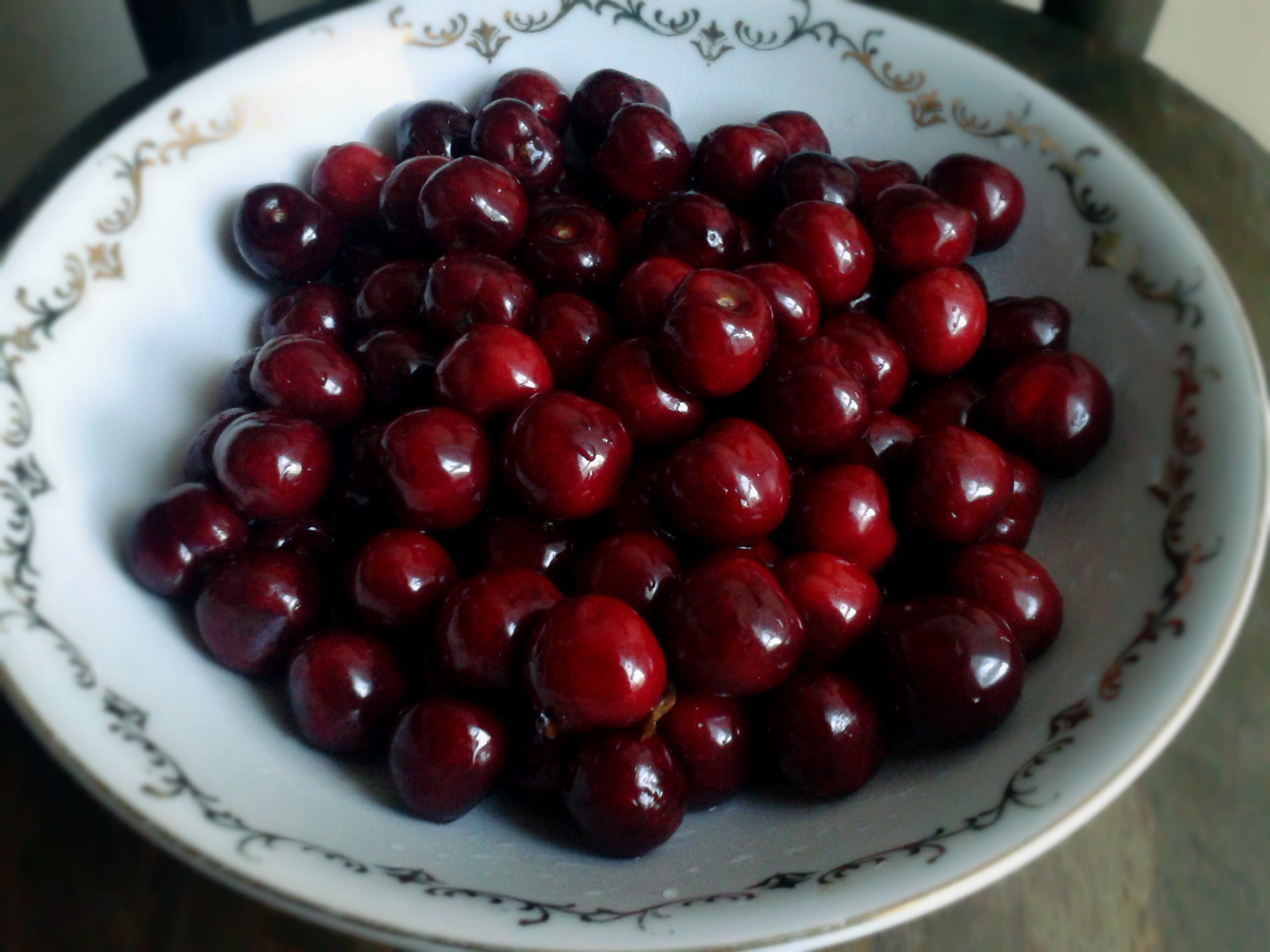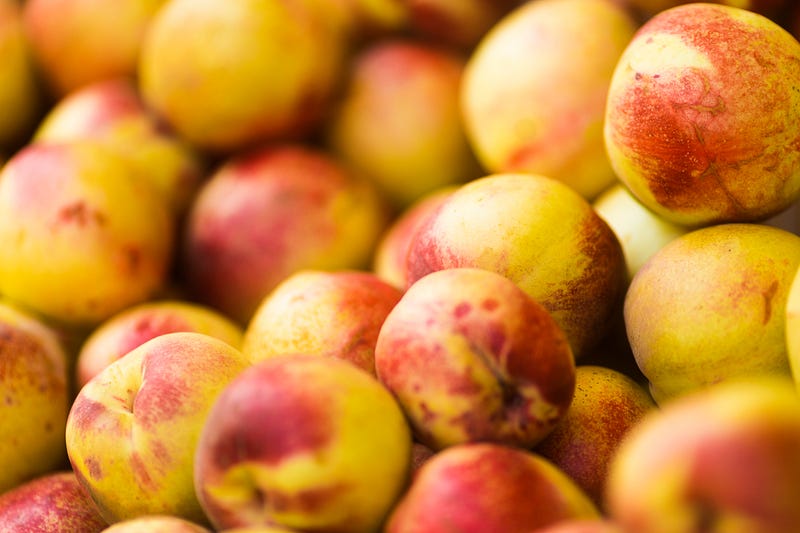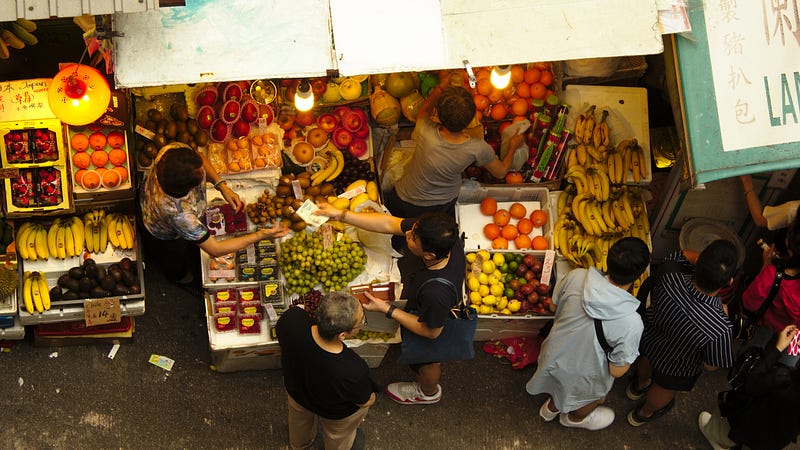
The plastic bag rustled as I dug around the bottom for Just. One. More.
Nope. Damn it anyway. I probably could have finished another bag. I spat out the pit. I’ve got good aim, from years of firing watermelon seeds at my big brother during the Florida summers. The pit landed in the sink with a satisfying ping. Two points.
As I stood in the dark kitchen, I chewed thoughtfully on my last cherry. The bag bragged, Nature’s Candy.
Sure is.
It’s remarkable what a long trip in the high country, away from convenience stores and aisle after aisle of bagged Halloween candy (yes, it’s out already and it’s the last day of July…kindly, to pilfer a phrase, Curb your enthusiasm) will do to change your taste buds. I used to pack Snickers bars. Not, to the best of my ability, I pack fruit, often dried, but fruit.
I tossed the bag.
Wrote cherries on my shopping list. That time of year.
I grew up in the middle of citrus central, the beating heart of orange juice country in Florida. We could walk outside and select anything we wanted that had fallen off the tree the night before. As with any true tree-ripened fruit, the sweetness that you get from fruits the way Nature intended (not picked hard and green, thank you)is mind-blowing. Most folks have no idea how sweet grapefruit really is. It doesn’t need sugar.
As this article explains, there are plenty of fruits like the now vastly-overpriced avocado (it’s a superfood right, so it needs a SUPER PRICE), only ripen after picking. Granted, the avocado debacle, resulting in some individual fruits costing five bucks or more (so much for cheap Mexican food, right?) is in part due to climate change. But that doesn’t change the fact that the moment some moke claims that the magical goji berry will make you ten years younger, start your coffee in the morning and help you lose that lard, it quadruples in price. Even as said super food isn’t. It’s just good food. But I digress.

Others, like the aforementioned cherries and my beloved citrus, need to ripen on the tree. I don’t know too many kids these days who have held an actual tree-ripened fruit in his hand, unless like me he picked it himself for pay.
No American kid I know will do that.
Unless of course his parents own the farm and if he wants to use his phone….
Back in 1985 I was hitching around New Zealand when, as was common for me at the time, I had a front tooth snap and fall out. Not being one to want to look like a member of the Royal Family, I sought dental care. It was expensive. I had limited funds. I paid by credit card, then decided to work off the grid to pay down the balance so that I could keep traveling. I didn’t have parents to pay my way so I was on my own.
I found a job at a place called Pedro’s Nectarines, owned and run by a guy from the Netherlands named Peter. He happily hired us tent-living backpackers for $4 NZ an hour, gave us fake Social Security numbers (sound familiar) and gave us the metal half-moon buckets to hang around our necks. We would climb the ladders high into his trees and gently pick- or so we were coached- each fat, sweet, ripe nectarine and drop it gently into the bucket.
Pedro only sold to stores within a 150-mile radius. He guaranteed ripe. He delivered. They were amazing. So were his peaches and plums.

Those nectarines are the evolution of California seeds on steroids. Like most other plants that grow in the nutrient-rich soil of New Zealand, the fruits- just like the Rocky Mountain rainbow trout that they used stock their predator free rivers- grew to monumental proportions. Their brown trout, famous all over the world, offer the serious fly fisherman the opportunity to catch record-breaking fish (as in, 42 lbs). Same with the fruit.
Many of the fruits we picked were too ripe to sell. We ate those, sugar-hungry wasps buzzing around our faces as the juice cascaded down our chins. For about a week we ate them until our GI tracts rebelled, and then we switched to apples.
Like all things, too much is just too much.

Pedro’s apples were the same. One was the size of a small pumpkin and could easily make two pies. You had to eat them in stages.
The difference is that in New Zealand, the fruit naturally grows this big, without much interference from us humans. The soil, the lovely weather combine to make a lovely outcome. Heavenly.
They get the same results from their grass fed cows, whose milk has a significantly higher fat content than ours. Just ask me. I ate plenty of their ice cream. With perfectly predictable results.
Tree-ripened. It makes all the difference in the world.
Which in today’s world is a very rare thing indeed. Which means that most Americans have no idea what fruit truly tastes like. Not really. I have friends who bite into a rock-hard nectarine that is days and days away from being edible and call it good.
I suspect that it’s good for removing plaque, but as for pleasurable munching?
Nah.

Each time I travel, and I do a lot, one of the first places I go is the local green grocer or fruit market. Each country offers a completely different smorgasbord, ranging from the magnificent variety of most mercados in Central and Northern South America to the ordered and lively open markets of the Netherlands, Norway and Sweden.

To eat a strawberry in Norway in the middle of July is to kiss an angel.
These are not the huge, overly-inbred, watery, pithy fruits of the American market where Big is Better and more important than Delicious, Nutrient-Rich and Healthy. These are small, intensely red, weirdly-formed at times. You will not taste anything much better in your lifetime if you like berries.
There was one market around the corner of my Copenhagen hostel which had such huge berries that I bought them five plats at a time and wiped out their supply for a week.
Kissing angels, as it were. I’ve rarely been happier.
Nature’s candy indeed.
The other day I bought a container full of blueberries. They are hit or miss, especially off season. This time, no. These were a bonafide hit.
One night after a hard workout I marched into the kitchen, ran some water over the entire box and plunked it down, leaking, onto the counter. Dug in.
I remember leaning against my kitchen counter putting handful after handful into my mouth.

As I munched thoughtfully, I realized that several months ago I might have wanted a little sugar and cream with my berries.
After all, that’s what my mother used to do with the Florida blackberries that grew wild next to the lake on our property. They were a bit more bitter, smaller, and they did well mashed with half and half and sugar.
Not these. I had given one a try, and a few minutes later the entire container was empty. It was a big one, too.
No Snickers bar- and I do like my candy- will ever compete with that.

Back in 1987 I dropped close to 80–85 pounds. For good. That feat was accomplished in part because I redirected. Nobody loves donuts more than I do. I could inhale two dozen hot Krispy Kremes with the best of them. My local baker on the main street in that small town knew to pack a huge box when he saw me coming. I was double-wide, and when I ran, I put the cracks in the sidewalk.
I could inhale his donuts and coconut cream pies and coconut cakes with gusto.
Still can.

One fateful weekend in the summer (our winter) of 1987, I chose differently. I started steering for the fruit aisle instead of the bakery section at my Safeway in the little town of Elsternwick, Victoria, Australia. That habit, along with falling in love with cycling, made all the difference.
I traded meat for vegetables, donuts for yogurt, water for Coke and a whole lot of other small changes that over time, gave me the body I have today. I’m a size two with size eight shoulders because I lift. The only way I can maintain that is through regular movement and sticking to the kinds of foods that my body loves and thrives upon, which is often raw and natural. At 66, that body is changing all the time, but certain things remain constant. For me, real food works best.
Yours will be different. However, I might posit that a steady intake of Oreos and Slim Jims isn’t likely to result in a body you’re happy with. Nor will that body be very happy with you.

We are designed to love certain tastes. The body likes sugar, but the body likes its sugar best in Nature’s perfect packaging. Preferably on Her timetable. That means what’s in season where you live. Look, I am well aware of how hard this is, but with a concerted effort- because consumers drive what companies do- we can make changes.
Buy local if possible. Buy from Farmer’s Markets if you can. And before you skewer me about inner city supermarkets, I am well aware of food deserts, so please don’t take me to task. There is progress- albeit slow-on that front. It’s going to take a long time, but if America wants her medical bills to drop, we might want to redirect a bit. Plenty of us have regular access to the best our growers have to offer and we head down the candy aisle instead. I did, too.
As for our waistlines, fresh fruits and veggies top the list of all modern research for getting and keeping it off. Whether you are an artichoke aficionado (my hand is up) a banana booster (my hand is up) or you cheer for cherries like I do, your body will likely thank you for the natural sugars and fibers for which our intestinal tracts were made.
There is a reason Mama Nature made all these fruits in such luscious colors, smells and tastes. We’re supposed to eat them.

Nature’s candy. You don’t need the extra sugar with fruits this good.
By Julia E Hubbel on August 7, 2019.
Exported from Medium on December 8, 2020.
Comments powered by Talkyard.